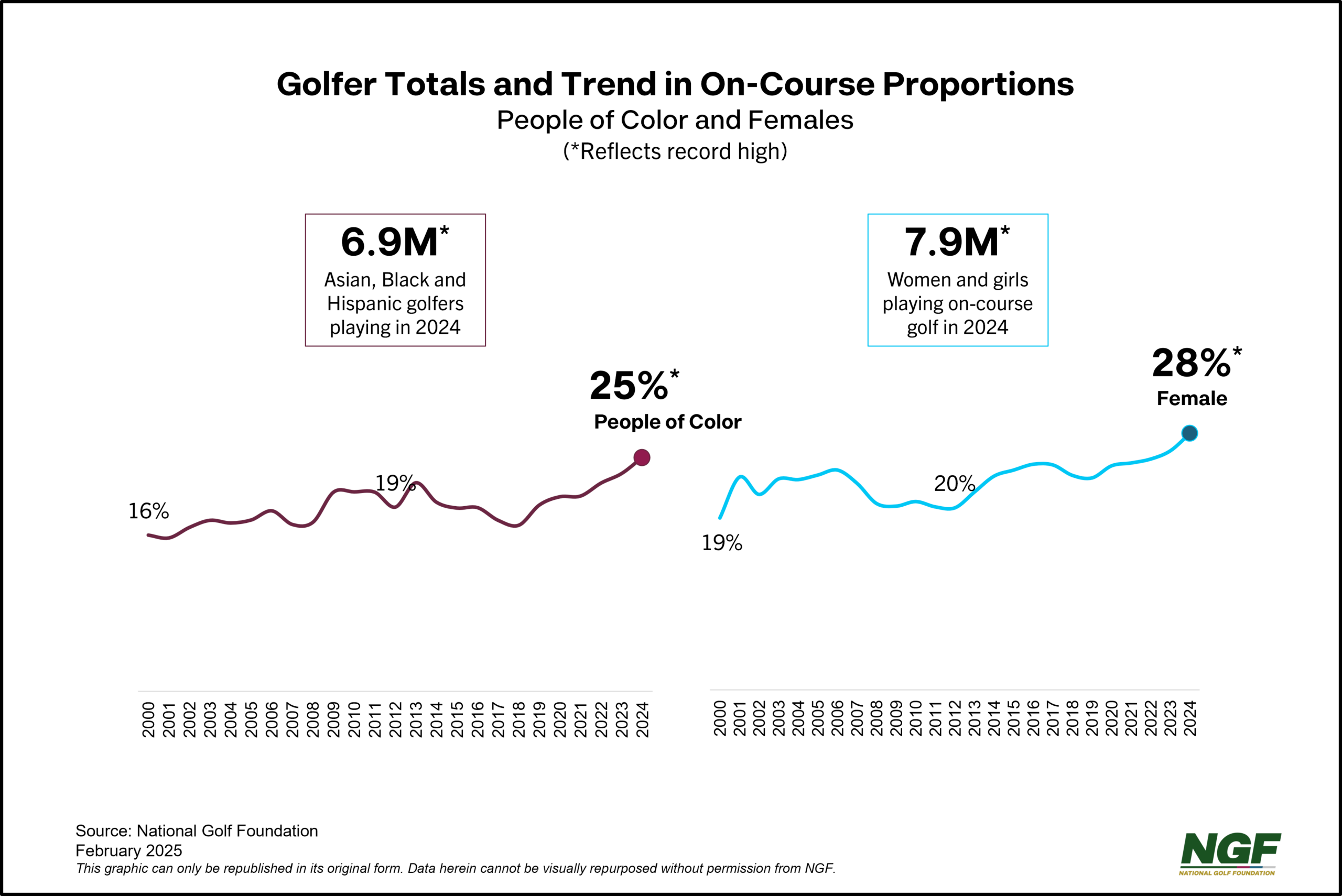(Click to listen to the audio version)
The face of golf may have changed more in the past five years than the previous 50.
Golf’s latest participation numbers reveal unprecedented diversity in the game.
Year-end data for 2024 shows that more than one-quarter of green-grass golfers in the U.S. are women and girls or People of Color, two distinct but overlapping segments that have historically been underrepresented in the sport.
Among the 28.1 million Americans who played golf on a course in 2024 (the most since 2008), 28% were female and 25% were Black, Asian or Hispanic, both representing the highest proportions ever recorded. These numbers – not mutually exclusive — reflect the continued evolution of the sport’s participant base, particularly when compared to historical benchmarks.
NGF members can find more information on these segments and more in the newly released Golf Participation in the U.S. Report.

The growth has been especially pronounced in recent years. Since the start of the pandemic, there has been a net increase of 2.3 million females and 2.1 million golfers of color playing on course. Women and girls have been particularly impactful in driving the sport’s post-pandemic growth, accounting for approximately 60% of the net gain in green grass golfers since 2019. The female golfer population has now reached nearly 7.9 million – an all-time high.
This representation is a significant lift compared to 2012, when females accounted for 20% of on-course golfers. That lower proportion coincided with the aftermath of the Great Recession, when many households faced tighter finances and an increase in two-income families, leading to reduced free time and less discretionary spending on pursuits like golf.
The growth in racial and ethnic diversity has been even more dramatic when viewed over a longer period. In 2024, there were almost 7 million Black, Asian and Hispanic on-course golfers, also a record total. This stands in contrast to 1990, when People of Color represented 8% of green grass golfers. By 2000, in part because of the emergence of Tiger Woods, this representation rose to 16%.
The ongoing shift mirrors broader demographic changes in the U.S. population, which continues to become increasingly diverse in terms of racial and ethnic makeup. In 2000, for example, People of Color represented 30% of the U.S. population age 6 and older. Today, that proportion has eclipsed 40%.
Golf’s off-course-only participant pool is even more diverse.
Females comprise 43% of the over 19 million Americans who play off-course forms of golf exclusively, while People of Color make up 45% of this group. Introductions and engagement away from the golf course have been shown to benefit the traditional game, as recent years have seen record or near-record numbers of beginners getting out on a golf course for the first time. This is, in part, because of the comfort and competency gained in hitting a ball with a club at golf entertainment venues, in an indoor simulator, or at a tech-enabled range.
The record levels of participation and representation in the key segments above suggest that golf is not only becoming more reflective of America’s changing demographics but the industry’s efforts to create a more inclusive environment are bearing fruit, setting the stage for continued growth and diversity in the years ahead.



